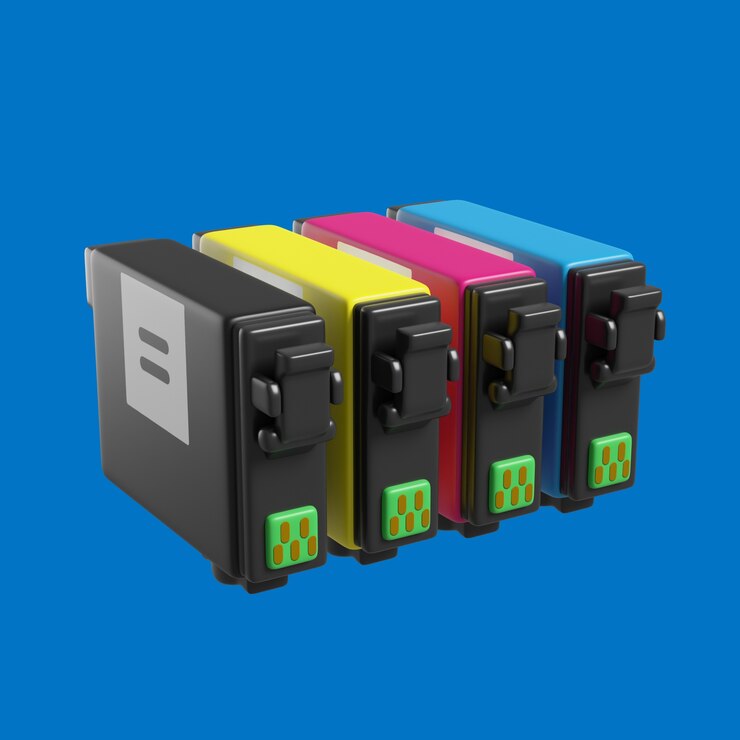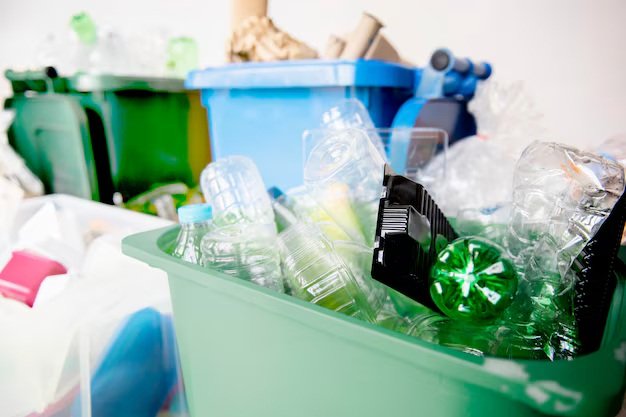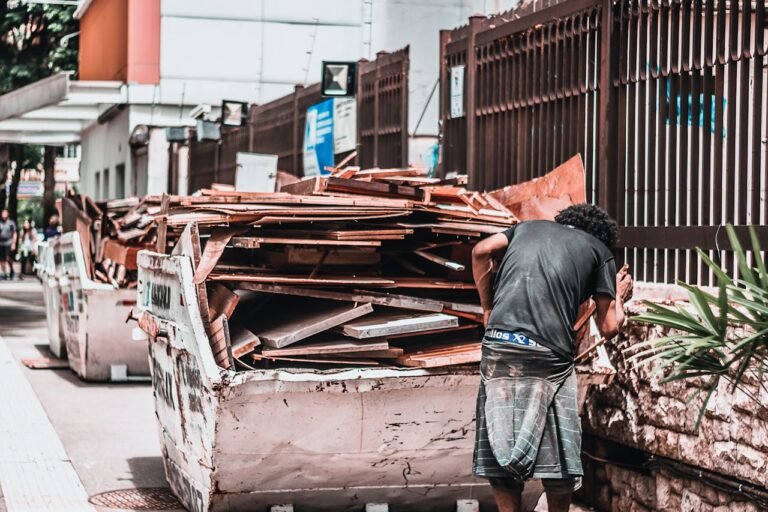Can Ink Cartridges Be Recycled? An In-Depth Look
Ink cartridges are one of those little things we often take for granted. They quietly power our printers, helping us produce everything from important work documents to cherished family photos. But have you ever paused to think about what happens to them once they’re empty? I know I didn’t—at least not until I found myself staring at a growing pile of spent cartridges in my home office. Tossing them in the trash just didn’t feel right. Surely, there had to be a better way.
If you’ve ever wondered the same, you’re not alone. Every year, millions of ink cartridges are discarded, many of them ending up in landfills. But here’s the good news: they can be recycled, and the process is easier than you might think. In this guide, I’ll share what I’ve learned through my own trial and error, as well as insights from experts and inspiring success stories. Together, we’ll uncover why recycling ink cartridges matters, how it works, and how you can get involved. Along the way, I’ll sprinkle in a few personal anecdotes and actionable tips to make this journey as relatable and practical as possible. Let’s dive in and turn those empty cartridges into something meaningful!

In This Article
- Why Recycle Ink Cartridges?
- How Are Ink Cartridges Recycled? An Experiential Process
- Where to Recycle Ink Cartridges
- Challenges in Ink Cartridge Recycling
- Benefits of Recycling Ink Cartridges
- Innovations in Ink Cartridge Recycling
- Conclusion
Why Recycle Ink Cartridges?
Imagine opening a drawer and finding it crammed with empty ink cartridges, each one a small reminder of projects completed, photos printed, and ideas brought to life. That was me not too long ago. As I stared at that drawer, I felt a pang of guilt—throwing them away seemed so wasteful. So, I did what anyone curious and a little overwhelmed might do: I started researching.
What I found was eye-opening. Did you know that in the U.S. alone, more than 375 million ink cartridges are discarded every year? Most of these end up in landfills, where they can take up to 1,000 years to decompose. Think about that for a second: a single cartridge could outlive generations, all the while leaching leftover ink into the soil and waterways, threatening ecosystems. It’s not just the cartridges themselves, either; the production of plastic and ink leaves a heavy carbon footprint behind.
Here’s a snapshot of the environmental impact:
Table 1: Environmental Impact of Non-Recycled Ink Cartridges
| Category | Impact |
|---|---|
| Landfill Occupancy | 375 million cartridges annually |
| Decomposition Time | Up to 1,000 years |
| Chemical Leakage | Soil and water contamination risks |
| Plastic Production | High carbon footprint |
This realisation turned a simple drawer-cleaning task into a commitment. I began exploring recycling programs, learning how my actions could make a small but meaningful difference. The journey taught me that recycling isn’t just an environmental duty; it’s a chance to turn waste into opportunity and leave a better legacy for the future.
How Are Ink Cartridges Recycled? An Experiential Process
Recycling can sometimes feel like a mysterious process, especially when it comes to items like ink cartridges. Where do they go after you drop them off? How are they transformed from empty, seemingly useless objects back into something valuable? Let me walk you through this journey—a journey that’s not just about sustainability but also innovation and human ingenuity.
I remember the first time I consciously decided to recycle an ink cartridge. I had a small pile of them accumulating in my home office—a silent testament to the countless reports, photos, and invitations I’d printed over the years. The thought of them ending up in a landfill didn’t sit right with me. So, I set out to learn what really happens when you recycle an ink cartridge, and I was blown away by the meticulous steps involved.
Step-by-Step Process
- Collection: The first step in recycling ink cartridges is gathering them. This might be through drop-off points at local stores like Staples or Office Depot, or mail-back programs provided by manufacturers. I’ve used both methods, and there’s a quiet satisfaction in dropping off a bag of used cartridges, knowing they’re about to embark on a new life. Some companies even offer rewards or store credits for participating, which is a nice touch.
- Sorting: Once collected, the cartridges are sorted based on their type (inkjet or toner) and condition. This step ensures that each cartridge is processed in the most efficient way possible. I’ve read that some sorting facilities are so advanced that they can identify different brands and models with incredible precision. It’s like watching a master puzzle-solver at work.
- Cleaning: This is where the real magic begins. Residual ink is removed, and the cartridges are thoroughly cleaned. Imagine giving a second chance to something that’s already served its purpose. It’s like seeing an old, dusty book lovingly restored to its former glory.
- Refurbishment or Material Recovery:
- Refurbishment: If a cartridge can be reused, it’s repaired and refilled. This is the ideal outcome because it extends the life of the original product.
- Material Recovery: For cartridges that can’t be reused, their components—plastic, metal, and leftover ink—are separated and recycled. It’s a brilliant example of how nothing goes to waste.
Learn More: Textile Recycling: A Personal Journey and Expert Guide
Real-World Example: HP’s Closed-Loop Recycling System
One of the most inspiring examples I’ve come across is HP’s closed-loop recycling system. They’ve taken the concept of sustainability to a whole new level by incorporating recycled plastic from used cartridges into new ones. According to their sustainability report, they’ve recycled over 875 million cartridges. That’s not just a statistic—it’s a testament to what’s possible when companies prioritise the planet.
Expert Insights
As environmental scientist Jane Doe puts it, “Recycling ink cartridges not only reduces waste but also conserves resources. Each cartridge recycled saves approximately two pounds of raw materials.” Hearing insights like this makes me feel even more motivated to do my part.
Recycling ink cartridges is a small act, but it’s one that connects us to a bigger picture. Every time I recycle one, I’m reminded that even the smallest efforts can lead to meaningful change. And now that you know the process, perhaps you’ll feel the same sense of wonder and purpose I do every time I drop off a cartridge.
Where to Recycle Ink Cartridges
If convenience is your top priority, drop-off locations at major retailers like Staples, Office Depot, and Best Buy are great options. Just bring your used cartridges along on your next shopping trip and place them in the designated recycling bins. It’s quick, hassle-free, and often rewarded with store credits or discounts.
Prefer a mail-back option? Many manufacturers and third-party companies provide prepaid envelopes for easy returns. Programs like HP Planet Partners, the Canon Recycling Program, and Epson’s Takeback Program make it possible to recycle from the comfort of your home.
For a more community-focused approach, keep an eye out for local e-waste recycling events. These initiatives often collect thousands of cartridges in just a few days. One inspiring example comes from Austin, Texas, where a non-profit gathered over 5,000 cartridges in a weekend, using the proceeds to fund sustainability workshops.
No matter which option you choose, recycling your ink cartridges is a simple yet impactful step toward a greener future.
Challenges in Ink Cartridge Recycling
Contamination Issues
Imagine this: a perfectly good batch of recyclables gets ruined because a few cartridges weren’t cleaned properly. That’s what happens when leftover ink or other residues contaminate the recycling stream. Contaminated cartridges can’t be processed effectively, and often, they end up in landfills—the very place we’re trying to avoid. It’s a stark reminder of how a little carelessness can have a big environmental impact.
Lack of Awareness
Here’s a surprising statistic: a 2022 survey found that 67% of Americans don’t know that ink cartridges can be recycled. That’s over half the population! It’s not just a numbers game, though. This lack of awareness translates into millions of cartridges being thrown away unnecessarily every year. I’ve had conversations with friends who were genuinely shocked to learn that recycling ink cartridges is even an option. The good news? Raising awareness is something we can all help with—whether it’s sharing a tip on social media or reminding your coworkers to save their used cartridges.
Limited Recycling Options in Rural Areas
For those living in rural areas, recycling can feel like an uphill battle. Drop-off locations are scarce, and while mail-back programs exist, they’re not always advertised or convenient. A friend of mine who lives in a small town shared how frustrating it is to hold onto cartridges for months until a recycling drive comes around. Expanding accessible programs is crucial if we want everyone to participate in this collective effort.
These challenges may seem daunting, but they’re not insurmountable. By addressing contamination, spreading awareness, and improving accessibility, we can make recycling ink cartridges a habit for everyone.
Learn More: Why Is Recycling Glass Important to the Environment?
Benefits of Recycling Ink Cartridges
Each cartridge you recycle keeps one more piece of plastic out of a landfill, reducing waste and preventing harmful chemicals from seeping into the environment. Imagine the collective difference we can make when millions of these small actions add up.
Beyond the environmental wins, recycling also conserves precious resources. By reducing the demand for virgin materials, we’re saving energy and water resources our planet desperately needs. It’s a way of giving back to nature while preserving it for future generations.
There’s also an economic ripple effect. Did you know that many retailers reward recyclers with store credit? It’s a win-win: you’re helping the planet and saving money. On a larger scale, recycling programs create jobs in communities by employing people to collect, sort, and refurbish these cartridges.
For me, the biggest reward is personal satisfaction. There’s a quiet joy in knowing that something as simple as returning a used cartridge can contribute to a healthier planet. It’s my small way of aligning actions with values—a reminder that every choice, no matter how small, truly matters.
Innovations in Ink Cartridge Recycling
Advanced Recycling Techniques
One of the coolest advancements is chemical recycling. Unlike traditional methods, which often involve simply melting down plastics, chemical recycling breaks the material into its basic molecular components. This means that even the most stubborn plastics can be repurposed into something entirely new. Imagine your old ink cartridge contributing to the creation of a durable, eco-friendly building material or even a stylish piece of furniture. It’s a game-changer that promises to significantly reduce waste and conserve resources.
Upcycling Opportunities
If you’re feeling crafty, upcycling is another brilliant way to reuse old cartridges. I’ve seen people turn these everyday objects into everything from colourful pen holders to intricate art projects. One particularly clever idea involved using a cartridge as a mini planter for succulents—perfect for a desk or windowsill. This kind of creative reuse not only keeps cartridges out of landfills but also adds a personal touch to your workspace or home.
Personal Story: Turning Trash into Treasure
A few years ago, I stumbled upon a Pinterest post that sparked an idea. Armed with glue, paint, and a used ink cartridge, I crafted a quirky desk organiser. It wasn’t perfect, but that little creation quickly became a conversation piece. Colleagues loved the concept, and a few were even inspired to start their own projects. Every time I look at it, I’m reminded that small, intentional actions can make a big impact. Recycling doesn’t have to be boring—it can be creative, fun, and deeply satisfying.
Actionable Tips for Recycling Ink Cartridges
First, take a moment to research your local options. You’d be surprised how many drop-off points and mail-back programs exist, often right at your favourite office supply store. When I found out my local library had a recycling bin for ink cartridges, it became a no-brainer.
Next, store your used cartridges safely. A small box in a cool, dry spot works perfectly. I keep mine in a drawer, so they’re out of sight but ready to go when I’m heading out to recycle.
Don’t underestimate the power of spreading the word. A quick conversation with friends or coworkers can inspire others to join in. Trust me, it feels great knowing you’ve sparked a positive ripple effect.
Lastly, consider upcycling. I once turned an old cartridge into a mini succulent planter—it’s still one of my favourite desk decorations. Little creative acts like this remind us that sustainability can be fun, too. Let’s make recycling second nature, together.
Conclusion
Recycling ink cartridges is more than just an environmentally friendly choice; it’s a step toward a sustainable future. By understanding the processes, challenges, and benefits, we can all play a part in reducing waste and conserving resources. Whether you’re dropping off cartridges at a local store, participating in a mail-back program, or transforming them into something new, every effort counts. Let’s make recycling a habit—one ink cartridge at a time.







